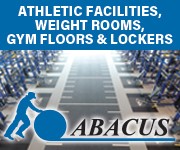In today’s technology-driven culture on university campuses, providing the appropriate connectivity has never been more important when designing a successful learning climate. Furthermore, the connectivity this technology requires just continues to grow.
In actuality, the student learning experience is greatly impacted by private space, collaborative space, casual space as well as desktops, laptops, pads, tablets and phones. Libraries, classrooms, lounges, and labs are all examples where outlets are needed and no walls exist in which to place them. Just as importantly, these types of spaces can provide an enhanced learning environment if the connectivity is flexible enough to allow for furniture layouts to be reconfigurable.
Moving Past Conventional Thinking for Campus Flooring Solutions
Conventional thinking about flooring solutions addresses only floor covering solutions, with floor outlets being part of the subfloor. While this approach does provide the connectivity in an open floor area, it does not allow for outlet relocation and, as a result, the outlets are seldom located as needed and cannot adjust to changing furniture layouts.
Integrated flooring solutions that go beyond the floor covering purview do, however, afford an equitable contribution to the use of technology in educational surroundings. Most notably, the “low profile, fixed height, raised floor” product group addresses the described needs, with the least amount of building structure impact. In essence, these types of products generate a platform providing a small height space, usually 2” +/- for the cables to travel through. With an overall height ranging between 2½ to 3 inches, they do not have an objectionable impact on overall ceiling height, which is of importance when working in existing spaces.
Five Decades of the “Raised Floor”
For over 50 years, the term “raised floor” has become synonymous with computer or server rooms. Typically, those raised floor systems were designed to accommodate heating / cooling and miles of cables typically required for large computer equipment. This is not the same set of conditions to be addressed. Low profile modular raised floor systems are designed to manage power and data cables and outlets in a more dispersed manner.
For the most part, these modular floor systems do an excellent job of managing your cables and outlet locations, in an openly populated space. The challenge is to select the right system for your specific application. Your flooring decision still includes “floor covering” considerations, but is expanded to include available cable space, ease of access to this space, outlet placement ability, and probably most important, adaptability. How easy and cost effective will the product be, and how responsive will it be in adapting to meet new needs?
To put this thought into perspective, how would you value a new floor covering product that advertised a five-year life expectancy or even a ten-year life expectancy? I assume the evaluation would not be a strong one. Consider, with the advancements we have seen over the past twenty years, that technology exceeds cable performances approximately every five years.
The Importance of Cable Accessibility
Potential service and upgrade considerations with these timespans make cable accessibility very important. Add to this the student-use prospects that would include outlet relocations, at an even greater rate, and your life cycle costs for floor coverings become skewed. In the simplest terms, consider this: How often are floor coverings installed with 25 year or greater life expectancies only to have the
For those areas that would benefit from this broadened view of flooring solutions, the next step is evaluation. Despite the “first glance” similarities of these types of products—such as the same height and same functional underfloor space—there are product differences that merit your attention.m diminished, damaged, or replaced because of other changes or uses of the space?
Products are available constructed of metal, wood, plastic, or cementous materials. Some are attached to the sub-floor, and some are floating. Some have vertical support structures, with surface panels attached; others provide an integrated panel, with vertical support and surface being a single unit. Also, most are floor products only, requiring various additional trades to complete the installation (i.e. electrical, IT, AV, and floor surface contractors), while others provide a complete system.
Deciding on the best product option includes many facets of your individual circumstances, site conditions and resources, time and cost, as well as future, often undefined, space usage.
Following are some recommended questions for your evaluation process.
- Is this a product that is easily and quickly adaptable to your changing room usage or requirements?
- Can the power, data and voice outlets be relocated easily without the need for special tools or contract labor?
- Does the product come complete with everything you need for a total and complete installation?
- Does the product require fastening to the subfloor in your space?
- How do change orders affect the overall cost of the completed project?
- Are trained installation crews available to install the product efficiently and correctly?
- Are additional trades or vendors required to complete the installation (electricians, carpet installers, data installers, etc.)?
- Can you easily evaluate both the short and long term costs when comparing the impact of the product variations?
Considering Short-term and Long-term Functional Benefits
As floor covering evaluation points, these questions may seem a little unusual at first, but you will quickly realize they are valued considerations in the broader perspective. As you decide to include the use of technology and its consequence on the functional benefits of the space, these points can have huge ramifications on the success of the space, both long and short term.
Further, we realize that specific answers to these points can be difficult to obtain. Do not become discouraged. If you only have to re-wire every eight years, instead of five or you only reconfigure your furniture once every three years instead of yearly, the benefits will be quickly realized. Your careful research will help you choose a product that works for your campus needs and delivers a much enhanced learning climate for your student body.










